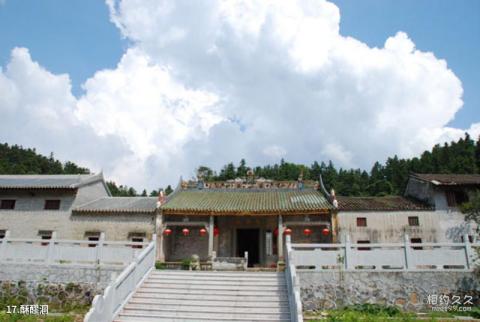
Introduction to Suyu Cave: Suyu Cave Scenic Spot is located in the deep valley between the north of Luoshan and the south of Fushan. It is shaped like the bottom of a cauldron, leaning against a green mountain at the back, facing a lotus marsh in front, and flanked by two mountains. The platform on the left is spectacular, and the pavilion on the right is very spectacular. It is known as the "ancient cave of gods" and "the secret area of Xunqi Ling and the blessed place for cultivation". The scenic spots and historic sites in the cave include Suyou Temple, Xiaoyao Terrace, Songyin Pavilion, Xiao Penglai, Baishui Gate, Boyun Temple, Wangji Stone, Qiniangtan, Boiling Stone Place, Ningbitan Pool, etc.
Sumo Cave is the former site of Ge Hong Bei'an. After Ge Hongxian passed away, Bei'an became increasingly decadent. During the Tang and Song Dynasties, Taoists built a temple at the old site of Bei'an and named the temple Sumon Temple. Due to disrepair over time, the temple gradually deteriorated. During the Republic of China, Zhang Yuquan, who had been the abbot of Suhu Temple for more than 40 years, and his Taoist colleagues "collected huge sums of money to rebuild the temple." The Taoist temple had a total area of more than 2,700 square meters. Lei Zu, Lu Zu and Ge Zu were worshiped in the temple. The main hall faced The patio extends out from the pavilion, which is 8 meters long and 4.75 meters wide. It is the place where the presiding officer instructs the disciples to perform rituals and preach the scriptures. There are century-old tea trees in the patio. In the temple, there are flower pots of the Qing Dynasty "Treasure Furnace" and the places where Chiang Kai-shek, Chen Jitang, and Cai Tingkai once slept. The ancient path bed.
